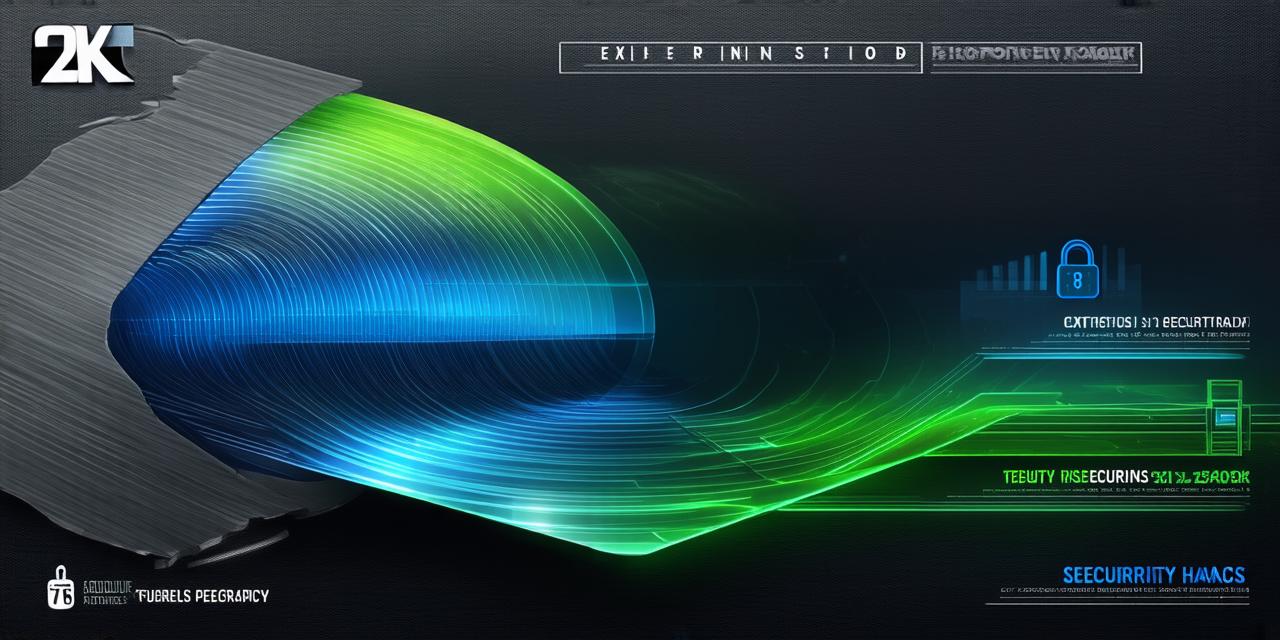Introduction:
Blockchain technology has been gaining popularity in recent years due to its decentralized and secure nature. One of the key features of blockchain is its security, which makes it an ideal solution for various industries such as finance, supply chain management, and healthcare. However, what exactly does blockchain security come from? In this article, we will explore the fundamental principles that make blockchain a secure platform.
1. Consensus Mechanisms:
One of the primary reasons for blockchain’s security is its consensus mechanism. A consensus mechanism is a protocol that ensures all nodes in the network agree on the state of the blockchain. There are several types of consensus mechanisms, including Proof of Work (PoW), Proof of Stake (PoS), and Delegated Proof of Stake (DPoS).
PoW is the most commonly used consensus mechanism, which requires miners to solve complex mathematical problems to validate transactions and add them to the blockchain. In return, they are rewarded with cryptocurrency. PoW is highly secure, but it consumes a lot of energy, making it expensive and not scalable for large-scale applications.
PoS, on the other hand, requires validators to lock up their cryptocurrency as collateral to validate transactions. Validators are chosen randomly to create new blocks based on the amount of cryptocurrency they hold. PoS is more energy-efficient than PoW and can be easily scaled, making it a better option for large-scale applications.
DPoS is a variant of PoS that allows validators to delegate their voting rights to other nodes in the network. DPoS is faster than PoS and consumes less energy, making it an ideal solution for real-time applications such as stock trading.
2. Cryptography:
Another crucial aspect of blockchain security is cryptography. Cryptography is a method of protecting information by converting it into an unreadable format that can only be deciphered with the right key. In blockchain, cryptography is used to secure transactions and protect the privacy of users.
Each transaction in a blockchain network is encrypted using a unique cryptographic hash function. This hash function takes the input data and produces a fixed-length output that is difficult to reverse engineer. The cryptographic hash function ensures that once a transaction is added to the blockchain, it cannot be altered or deleted without being detected by the network.
Blockchain networks also use digital signatures to authenticate transactions. A digital signature is a mathematical algorithm that verifies the authenticity of a message or document. In blockchain, digital signatures are used to ensure that transactions are valid and have not been tampered with.
3. Decentralization:
Decentralization is another key feature of blockchain that makes it secure. Unlike traditional centralized systems, blockchain networks are decentralized, meaning there is no single point of failure. Each node in the network has a copy of the entire blockchain, and transactions are verified and validated by multiple nodes before being added to the blockchain.
Decentralization ensures that even if one or more nodes in the network are compromised or hacked, the others can still continue to function without interruption. This makes it difficult for attackers to gain control over the network, as they would need to compromise a majority of the nodes to disrupt the network’s functionality.
4. Immutability:
Immutability is another fundamental principle that makes blockchain secure. Once data is added to the blockchain, it cannot be altered or deleted without being detected by the network. This ensures that the integrity of the data is maintained and that it cannot be tampered with.
The immutability of blockchain data makes it ideal for applications where data integrity is critical, such as in the financial industry, where transactions need to be verified and validated before they can be processed.
5. Smart Contracts:
Smart contracts are self-executing programs that run on the blockchain network. They are designed to automate the execution of complex business logic and ensure that transactions are executed only when certain conditions are met.
Smart contracts are an essential part of blockchain security, as they ensure that transactions are verified and validated before they are added to the blockchain. This reduces the risk of fraud and ensures that all parties involved in a transaction have agreed to its terms.
Case Study: Bitcoin
Bitcoin is the most well-known cryptocurrency and is built on the blockchain network. Bitcoin’s security is based on several principles, including its consensus mechanism, cryptography, decentralization, immutability, and smart contracts.
Bitcoin uses a PoW consensus mechanism, where miners compete to solve complex mathematical problems to validate transactions and add them to the blockchain. In return, they are rewarded with new bitcoins. Bitcoin’s cryptographic hash function ensures that once a transaction is added to the blockchain, it cannot be altered or deleted without being detected by the network.

Bitcoin is decentralized, meaning there is no single point of failure. Each node in the network has a copy of the entire blockchain, and transactions are verified and validated by multiple nodes before being added to the blockchain. This ensures that even if one or more nodes in the network are compromised or hacked, the others can still continue to function without interruption.
Bitcoin’s immutability is maintained through its cryptographic hash function, which ensures that once data is added to the blockchain, it cannot be altered or deleted without being detected by the network. This makes it difficult for attackers to gain control over the network, as they would need to compromise a majority of the nodes to disrupt the network’s functionality.
Bitcoin also uses smart contracts to automate the execution of complex business logic and ensure that transactions are executed only when certain conditions are met. This reduces the risk of fraud and ensures that all parties involved in a transaction have agreed to its terms.
Conclusion:
In conclusion, blockchain security comes from several fundamental principles, including consensus mechanisms, cryptography, decentralization, immutability, and smart contracts. These principles work together to ensure that transactions are verified and validated before they are added to the blockchain, making it difficult for attackers to gain control over the network.
Bitcoin is a prime example of how these fundamental principles work together to create a secure cryptocurrency network. Bitcoin’s popularity has led to its widespread adoption in various industries, making it an essential tool for secure and transparent transactions.
As blockchain technology continues to evolve, we can expect new and innovative security measures to be developed, ensuring that blockchain remains a secure and reliable platform for various applications.
FAQ:
1. What is the difference between consensus mechanisms in blockchain networks?
There are several types of consensus mechanisms used in blockchain networks, including Proof of Work (PoW), Proof of Stake (PoS), and Delegated Proof of Stake (DPoS). PoW requires miners to solve complex mathematical problems to validate transactions and add them to the blockchain. PoS requires validators to lock up their cryptocurrency as collateral to validate transactions. DPoS allows validators to delegate their voting rights to other nodes in the network.
1. How does cryptography ensure the security of data on the blockchain?
Cryptographic hash functions are used to ensure that once data is added to the blockchain, it cannot be altered or deleted without being detected by the network. This ensures that the integrity of the data is maintained and that it cannot be tampered with.
1. What makes decentralization an essential feature of blockchain security?
Decentralization ensures that there is no single point of failure in the blockchain network. Each node in the network has a copy of the entire blockchain, and transactions are verified and validated by multiple nodes before being added to the blockchain
